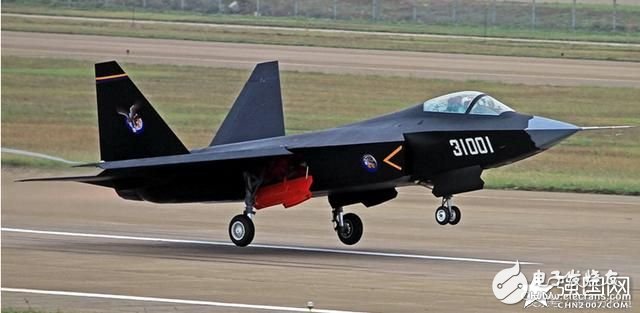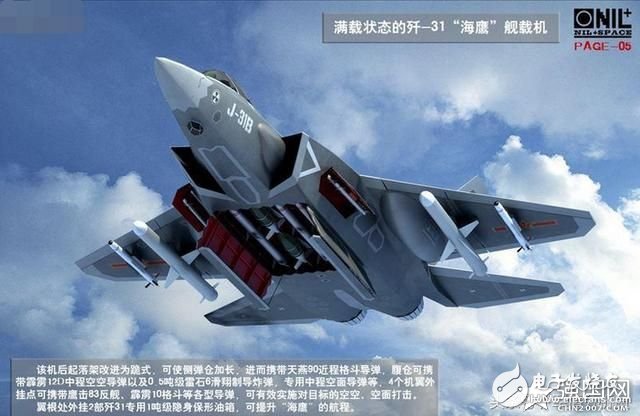The test pilots of Shenyang Aircraft Corporation of China have begun testing a new high-tech aircraft. Has China already had a multi-role fighter that can challenge the F-35? Is this new type of aircraft really the "all of the project"? In this regard, the article pointed out that the PLA Air Force will not be satisfied with China's first attempt at the fifth-generation fighter technology. The æ¼-31 fighter is unlikely to be used to attack enemy aircraft, and more likely to improve the capabilities of Chinese aviation engineers. China's military R&D project is notoriously secret, so the appearance of the æ¼-31 fighter prototype in October 2012 surprised both at home and abroad. It is worth noting that the prototype of the æ¼-31 fighter is quite similar to the F-35. In recent months, speculation about China’s successful espionage campaign against the F-35 has been constant, although most of the speculation is centered on the appearance of certain sensing systems in the Chinese Air Force fighters. The J-20 fighter may have been affected by the F-35, but the J-31 is almost certainly affected by the F-35. According to the article, the æ¼-31 fighter plane may form a “high and low collocation†with the J-20 fighter, and it will fight with the elite Chinese fighters at high altitude, while the æ¼-31 fighter will serve as a mainstream fighter and attack aircraft. This power configuration is similar to the US Air Force's F-22 and F-35A combination. However, it has always been a long time to predict in advance how the Chinese military will apply its military technology. Chinese military officials and state-run media often have a confusing description of the future of this fighter. This may be because Chinese military industrial enterprises often use the "intergenerational jump" development system. Under this development system, China quickly produced many different designs as prototypes or a small number of units, enabling China to rapidly improve its mastery of technology while building capacity for large-scale production of mature systems that rival international competitors. Photo: Debut at the 2014 Zhuhai Airshow's æ¼31 fighter Perhaps many people will think that æ¼31 is just a model of self-raised funds development, and it is impossible to compare with æ¼20. However, the evaluation of public opinion is not enough to affect its research and development. In 2014, the æ¼31 prototype not only participated in the Zhuhai Air Show, but also performed an air show. This year, only one model came. What is the reason? Perhaps the aircraft ushered in a major change, let it choose low-key: export to domestic sales, and get domestic user recognition. The netizen draws the imaginary map of the 31B fighter. However, according to the Chinese Navy's naming rules, if you go to the ship, you should be called æ¼31H. According to the memoirs of the Chinese aviation system academicians, the Chinese navy and air force competed for five generations of fighters before 2010, æ¼20 won the Air Force bid, and æ¼31 failed in the Air Force bid. In the development of the Chinese navy, this development system is very obvious: since the 1990s, the PLA Navy has installed five levels of domestic destroyers, each of which has progressive improvements from the previous level, but only the last One level, the 052D destroyer, was approved for mass production. In recent years, the Chinese aircraft development process has followed a similar development model. Shenyang Aircraft Corporation has produced a small number of test batches of highly upgraded side-guard aircraft and ship-side flank fighters, as well as the æ¼-31 fighter. In 2005, Chengdu Aircraft Company launched the J-10A multi-purpose fighter. After a few years, the aircraft was replaced by the upgraded J-10B. The flight company is currently producing a prototype of the J-20 air superiority fighter. Therefore, the article pointed out that it is difficult to imagine that the PLA Air Force will abandon its small-volume, fast-propelled development model and be satisfied with China's first attempt at the fifth-generation fighter technology. Therefore, the æ¼-31 fighter is unlikely to be used to attack enemy aircraft, and more likely to improve the capabilities of Chinese aviation engineers. The F35 is a new generation of stealth fighters currently being developed by the United States and its allies. The F35 has A (Air Force), B (Marine Corps), and C (Navy). It is the most versatile modern fighter in the United States and the world. One of the best stealth performance fighters, the future F35 fighters will not only be installed on the US military, but will also be exported to other countries in the world in large quantities. This does not exclude the Pakistan Air Force. China's 31st fighter is a new generation of export-oriented stealth fighters developed by Shen Fei's self-raised funds. The aircraft is very similar to the US F35 fighters in terms of tonnage and appearance. Therefore, it has great potential in the international market and is China's largest weapon import. Pakistan, which has been known by the media as the most likely country to be listed as the first 31 countries, but from the current statement of the Pakistani Chief of Staff, the 31st Air Force in Pakistan may not be smooth sailing. China is developing aircraft engine technology. Russia offers most of the engines for Chinese aircraft for sale, such as the FC-1 "Zhenlong" fighter aircraft using the RD-93 engine - also known as the JF-17 "Thunderbolt" fighter. However, as we all know, China is developing a local product that replaces the RD-93 engine on the JF-17 "Thunderbolt" fighter, the so-called WS-13 engine. This local engine has a slightly stronger propulsion than the Russian engine. According to Chinese officials at the Paris Air Show, a JF-17 "Thunderbolt" fighter jet using the new engine has been tested. Beijing may still have a long way to go before this new engine reaches its optimal level. Still, if China is really close to perfecting the WS-13 engine for production preparation (as some in the Pentagon say), then the engine may be developed into a propulsion system for the æ¼-31 fighter. The current æ¼-31 fighter/FC-31 "Eagle" fighter (like the JF-17 "Thunderbolt" fighter) is powered by the Russian RD-93 engine. In fact, Chinese officials said in an interview at the Dubai Air Show that the FC-31 "Eagle" aircraft will be driven by "advanced engines" made in China. Admiral Sohar Oman, chief of staff of the Pakistan Air Force, said that Pakistan will seek to acquire American F35 fighters in the next 10 years. Previously, the general view was that the Chinese 31 fighter was the first choice for Pakistan's new generation of fighters. The embarrassing situation of the "Jilong" defeated in Egypt is likely to repeat itself when æ¼31 strives to enter Pakistan. For Pakistan, it is difficult to reduce India's air force advantage through traditional warfare confrontation, and relying on China's mature high-end air defense missiles to build a strong local offensive and defensive air defense network is a more cost-effective choice. The preferred equipment is China's red flag 9 missile. As everyone knows, although Pakistan's national strength is far less than that of India, it always strives to be in line with India's overall technical level, and even exceeds it. This is evident from the fact that Pakistan has not yet mastered the Su 30MKI in India, and it has already been seen on the F16block52+. At this stage, in the face of India’s contract with Russia to develop and purchase 154 T50 fighters, Pakistan will undoubtedly need a fifth-generation aircraft with comparable equipment performance and T50, and it will be difficult to meet Pakistan. This fundamental need. Not long ago, Pakistan just refused to replace the Chinese WS13 engine for the "Zhenlong" fighter, and turned to the Russian-made RD93 engine overhaul factory in China. It is worth noting that the WS13 engine is the engine used in the æ¼31 fighter. Therefore, Pakistan refused to replace the WS13 engine for the "Jilong", which can actually be regarded as a rejection of æ¼31. Despite the characteristics of many fifth-generation fighters, the æ¼31 fighter is undoubtedly still behind the T50 era. As far as the engine is concerned, the WS13 is actually a replica of the Russian-made RD93, while the RD93 is a single-engine version of the RD33 engine equipped with the Russian MiG-29. Compared with the "30 series" engine of the T50 equipment that will be tested in 2018, the low-end RD93 engine in the third-generation aircraft is undoubtedly behind a generation, and is expected to adopt the Chinese version of the RD93 engine. To fight against the T50, the difficulty is comparable to the sky. More importantly, the design of the æ¼31 is based on two intermediate pushes, and there is currently no high-performance engine with the same size as the push-up for the æ¼31, making it comparable to the fifth-generation fighter. flexibility. Therefore, in Pakistan's view, even if the most in-depth modification is not the opponent of the T50, then it is normal to ask Gaoming. Din Rail Connectors,Din Terminal Block,Din Rail Mount Terminal Block,Rail Terminal Block Cixi Xinke Electronic Technology Co., Ltd. , https://www.cxxinke.com
